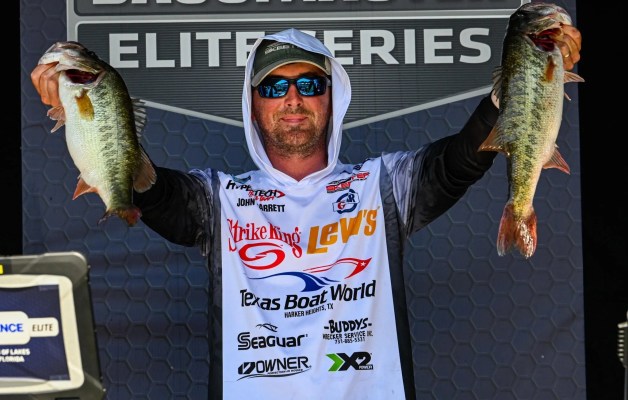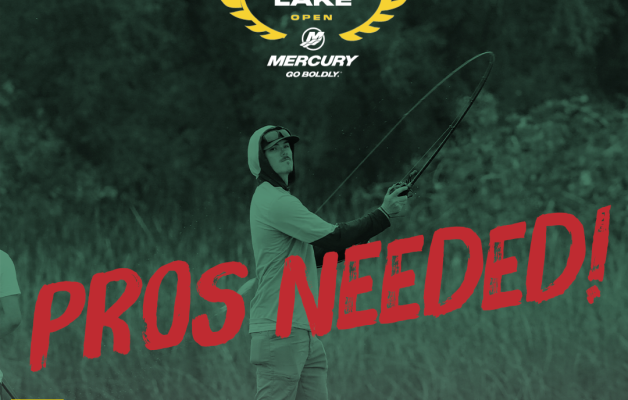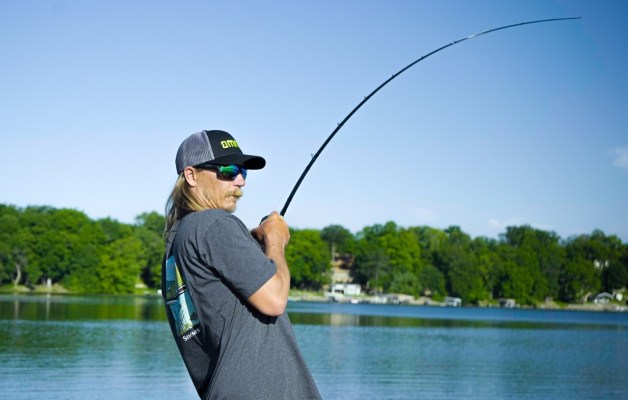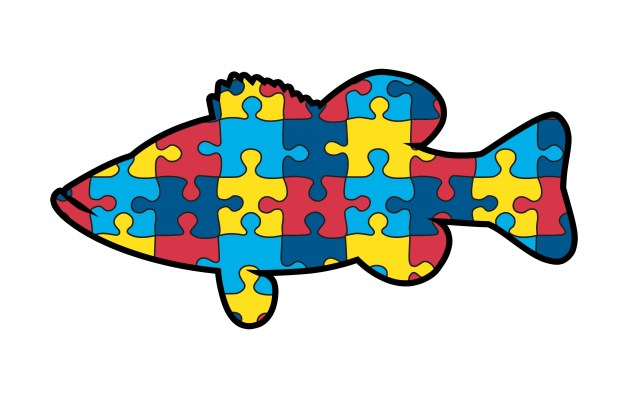
Last time we ended with a discussion of line control. We’ll start this time with a discussion of line choices.
I know a lot of top pros like to flip and pitch with braid. They point out — correctly — that it’s stronger and more durable than fluorocarbon and that when you’re looking for a reaction bite line visibility doesn’t make any difference.
For my money, though, fluorocarbon is the best. It gives the bait a more natural drop and the strength and durability issues can be solved by using a high test-weight fluorocarbon and retying a little more often. If you want to see what I’m talking about, tie on two identical baits, one with braid and one with fluorocarbon. Watch them fall. The difference is obvious, to me anyway.
I’m not going to mention monofilament. No one I know will flip or pitch with it anymore — too much stretch.
My reel is a super-fast retrieve (7.9:1 gear ratio) Abu Garcia MGX model. I want to be able to pick up any slack in the line quickly regardless of whether I want to get my lure back or if I detect a bite.
I use a 7-foot, 6-inch Abu Garcia medium-heavy rod for my presentation. That lets me get relatively light baits to my target with a lot of accuracy, and it gives me enough backbone to get them out of the wood before they get me into trouble. More importantly, that length helps me keep control of my line as the bait falls.
If you’re short, you might want to use a 7-foot rod. If you’re really tall, you might want to go up to an 8-foot model. A rod that’s too short will put too much bow in your line. One that’s too long will put too little in it. Find the one that’s right for your height and your style of fishing. The easiest way to do that is to hold the rod at the 2 o’clock position and see how the line drapes off the tip.
My weights range from 3/8 up to a full ounce. I like the heavier weights for clearer water. The bass can see the bait better so a faster fall is the deal. On the other hand, if the water is dirty or muddy I go with something lighter. It gives them a little more time to find the bait and get to it.
You can flip or pitch bushes with almost any plastic lure. My general preference is for beaver looking ones. They tend to fall naturally and make a realistic presentation. My all-time favorite for bushes is a Havoc Devil’s Spear. It has a cylindrical body with a spear-type tail. The body helps it drop straight down and the tail waves back and forth which gives it a realistic swimming look and a little extra water displacement.
Flipping and pitching bushes isn’t as simple as it looks on TV. It takes practice. But, like a lot of things in life, you’ll get out of it what you put into it.
Mike Iaconelli’s column appears weekly on Bassmaster.com. You can also find him on Facebook and Twitter or visit his website, mikeiaconelli.com.





